Amy C. Fitzjohn's Blog, page 2
January 18, 2024
Writing Through Creative Constipation
Some days, it’s just hard.
You’re sat there, straining to push it out but getting nowhere.

You know you ‘should’ be writing – that blog, that course content, that story, those next 1000 words – but it’s blocked.
Don’t Call It Writer’s BlockI’m immediately going to dismiss the notion of ‘writer’s Block’, because when you give it a name, you give it power, and it’s not a thing, it’s just your own motivation and discipline!
You need to make the time, stick to it and do it. That’s how you start to build healthy habits.
Unintentional WritingWe’ve all had those days where we intend to write, sit at the screen and our mind goes blank. We’ll do anything to get out of it because it’s hard.
Don’t let yourself get away with it! Be true to your intentions.If your boss was breathing down your neck telling you to, “write that blog or write that book chapter otherwise you’re fired”, you’d do it.
The best way to overcome the blank page is to start writing.
How do you write a book? One word at a time.
[image error]Little and often is the route to success
Write for no other reason than the experience of writing.
Unintentional writing is a powerful way to break through creative blocks.
Write for 30 minutes. Write whatever is in your brain, even if it’s…
‘I’m really struggling to know what to write because my brain is full of…’It sounds weird and you might feel silly at first – but remember, no one needs to see it – but trust me, it really works.
The point is to clear through the fog and engage the muscle memory for writing.
See where it takes you!
JournallingAn extension of writing unintentionally is journalling. Check out Bullet Journalling if you want to learn simple techniques to make it more productive.
Journalling is a small act of daily productivity that supports your mental health and gets you into the routine of regular writing.
Make Time To Write RegularlyLike improving your level of fitness, it’s far more effective to do a little writing regularly than a couple of bursts of activity each month.
Pro Tips To Be Disciplined To WriteBlock out space in your diary at least once a week for a couple of hoursChunk the time into short burst, i.e. 30 minutes every other dayHold the space and protect it – don’t book anything else into that slotIf you have to eat into your writing time, negotiate with yourself and swap out the time on another dayStick to it!Show up with a positive attitude. If you show up to your writing time thinking “This is hard.” Or, “This is indulgent, I shouldn’t do it.” Or worrying that you can’t do it or it won’t be perfect.. it will become a self fulfilling prophecy. Show up telling yourself that this is your time. You have been looking forward to this. This is for your own self care and mental health. this is your space to be creative, it is far more motivating and energising.Happy Writing!
The post Writing Through Creative Constipation appeared first on Amy Morse.
January 2, 2024
Busy Badge of Honour – The Scourge of Busy

Many years ago, in another life, I was an HR Administrator for a busy manufacturing firm in south Somerset.
The factory staff worked shifts but the office staff worked regular office hours. Rather than 9-5, we worked longer hours Monday to Thursday so we could close early on a Friday. Most working days were already longer than average, we started at 8 am and finished at 5.30 pm.
One senior manager was usually the first to arrive in the morning and the last to leave at night.
The trouble is, he expected his team to as well.

Basically, because he lived to work he expected others to do the same.
The business relocated to new premises; this manager was suddenly in an open planned office with the rest of us. When the clock hit 5:30 pm, everyone was out of the door, and on a Friday we were usually in the local pub by lunchtime.
As the daily mass exodus commenced, he’d sit there, narrow-eyed, scowling at everyone from his desk.
He’d never wish anyone a good evening, he’d just sit there, angrily tapping at his keyboard, muttering under his breath.
The Toxic MuttererHis muttering got more and more vocal and one day (being a cocky, 20 something) I found the courage to stand up to him.
He made some sarcastic remark, “What is this, an early night?” at a couple of the admin team, who worked bloody hard at their jobs – a passive aggressive remark and I wasn’t having that bullying bullshit on my watch!
I responded, “Michael, we earn half the salary you do, so why should we work beyond our contracted hours? Don’t you have a home to go to? Your contracted hours are 5:30pm too you know. If you’re too busy to manage your workload in those hours, ask for help.”
(Names have been changed to protect the guilty)
Funnily enough, he never grumbled in front of me after that; in fact, he went out of his way to be nice to me!The Scourge of Busy SicknessI’m sharing this, as it’s a perfect example of the ‘guilt based busy sickness’ that infects the way we work in the UK.
The idea that, to be taken seriously, you must give your life to your employer. Your job IS your life.
Laying on the guilt…How dare you take unreasonable liberties such as only working your contracted hours?
What’s wrong with you?
You’re so lazy?
Where’s your ambition?
I’m your boss, I pay you slightly more than minimum wage, therefore you should be grateful and sell your soul to me!
When you become your own boss…So many of us become self-employed because we’re sick of working for unreasonable bosses in toxic work environments.
Perhaps you woke up to such tyranny one day and said, “enough is enough. I don’t need to take this anymore, I’ll find another way.”
Am I the only one sick of this Dickensian – wringing your flat cap in your hands worthlessly – ‘yes so, no sir, three bags full sir…’ – idea of what work should be?
After seven redundancy notices in five years (the seventh was my key to freedom!) I said to myself, “I’ll never work for anyone else again.” (I have done since, but only part time and temporary and only when it suited me!)
So, why do so many people become their own bosses and adopt the same approach to managing themselves?Is it because being made to feel small and worthless, or bullied into submission by passive aggressive tutting and judgy-judgy eyeball rolling, has been our only experience of management?
Make time for lifeI was on the receiving end of something similar to this at a networking event recently. Remarking that I avoid evening and weekend business events because that’s my time. Networking is part of my job so why should I do it in my own time?
I was laughed at.
With a snort, someone said “self-employed and you want a life?” as if that was a completely alien concept. Work IS your life. Busy is good (whether you’re paid or not). Aspiring to have a life beyond my job is a form of insanity. Somehow I’m not really a ‘serious businessperson’ because I want some semblance of work-life balance.
Measure of successFor me, having freedom, flexibility and more time to do things beyond working is a key measure of success for me and my business.
To work less and earn more when I do work are why I became self employed.
It has it’s challenges and ups and downs, of course, but at least that’s on my terms!
Think about that for a moment…Now ask yourself: Are you being an unreasonable boss to yourself?
A reasonable boss will:
Set boundariesYour boundaries are those written into your employment contract, such as contracted working hours. If an employer expects you to step beyond those agreed boundaries they should compensate you accordingly – i.e. time off in lieu or overtime – That’s only reasonable and fair.
As your own boss, you need to set your own boundaries. If you do step outside of those boundaries – i.e. spending time you should be spending with your family at an event – you need to compensate yourself for it. Either be making it pay for itself or by giving yourself the time off in lieu.
A fair day’s work for a fair day’s payIn employment, if you go to work you expect to be paid.
We do a lot of things for free in our businesses, it’s part of the deal, but only give your time for free if it has real benefits to your business. I like to think of ‘free’ time as something I allocate from my marketing budget, set that ‘budget’ and stick to it!
Just because you enjoy what you do doesn’t mean you shouldn’t be paid for it.Don’t be shy about asking to be paid for your time. And don’t forget to factor in all the ‘back office’ activities of your business into your pricing. If you were an employee, that business has to earn enough money to pay to employ people in the ‘non-money-making’ functions of the business, ie: marketing, product development, customer service, admin, managerial task, accounts, IT support etc.
When you are your business, you are also do all of those job roles, so you need to pay yourself for that time and energy you expend on them. Alternatively, you’ll need to make enough money to pay someone else to do them!
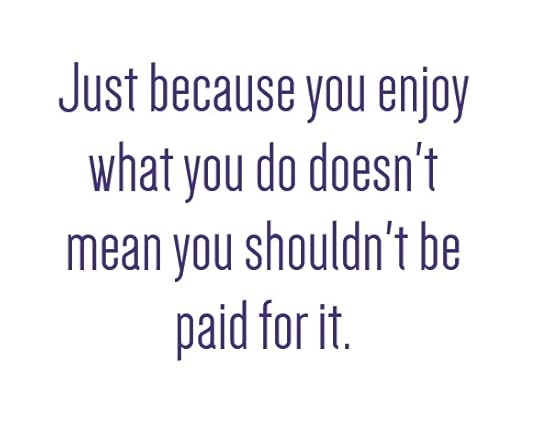
What are the costs financially, in time and energy of doing something, and what are the benefits?
Test them against each other – work out the pros and cons before you agree to work for free.
Down timeThere are laws protecting the number of hours people can work and the amount of time off they are entitled to.
When you work for yourself, it’s up to you to plan your time, and that includes protecting time in your diary to take a break.
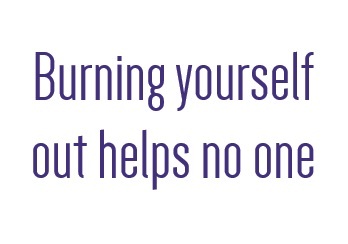
You may love what you do, you may feel invincible, but burning yourself out helps no one.
It doesn’t serve your customers, it doesn’t serve your friends and family, and it doesn’t serve you.
The law is there to protect people from exploitation by others. When you’re self-employed, make sure you don’t exploit yourself – because no one else will protect you!
Work smarterIn employment, you can often get away with wasting time or not working efficiently. You quickly learn what you can ‘get away with’ in a job. We need those moments to keep us sane when our time is owned by someone else.
When you own your time, you don’t get paid for being inefficient, wasting time or procrastinating. Analyse the things you busy yourself with in your day and decide what you could do more efficiently, what you can stop doing altogether, and what you can get someone else to do so you can focus on the activities that do pay you.
“Do what you do best and outsource the rest”
Save
Save
Save
Save
Save
Save
Save
The post Busy Badge of Honour – The Scourge of Busy appeared first on Amy Morse.
December 12, 2023
The Art of Productive Procrastination
Procrastination is just a step on the path to productivity.
I’m a terrible procrastinator.
Productivity rarely comes easy!
When you work for yourself, you are both the biggest asset and the biggest liability to your business!
Self-Sabotage Becomes An Art FormYou talk the ideas through over and over in your own head.
Talk yourself out of things.
Ruminate over that ever-expanding To-do list until you take no action at all because it’s an insurmountable obstacle.
The self-talk is the loudest when you are your only colleague.
However, the worst form of self-sabotage you can practice in your business is to do nothing!
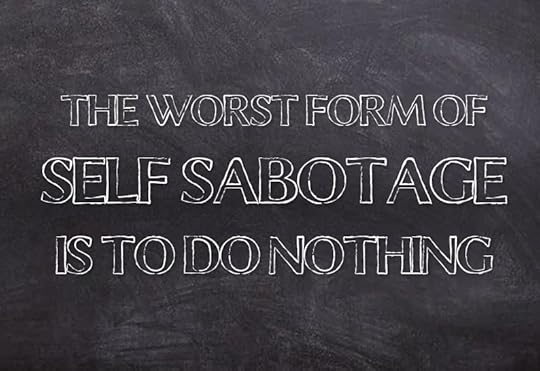
When you do nothing, you fail by default.
 Why Do You Procrastinate?
Why Do You Procrastinate?There is a fine line between procrastination and perfectionism.
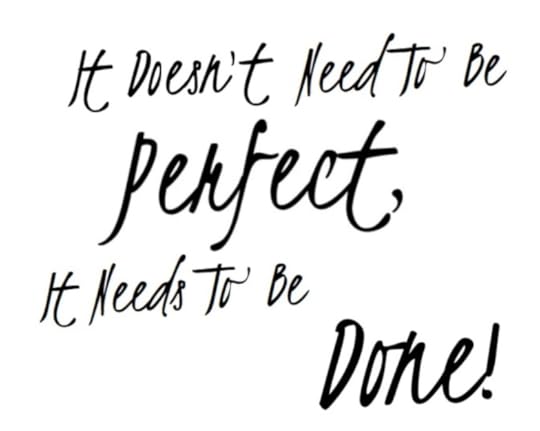
I don’t consider myself to be a perfectionist – I’m not that much of a ‘details person’. I have always been a big picture thinker.
The thing that stops me taking action, is not knowing ‘how’ to turn an idea into tangible actions or manageable steps.
I’m easily distracted by the shiny thing and the next thing, without finishing the current thing!
Others self sabotage for fear of judgement (whether consciously or otherwise).
We are often our own biggest critic. It’s easy to punish yourself for not ‘getting stuff done’
When you work for yourself, and often find yourself alone at home, it can be tough to stay motivated.
Part of the processIt’s taken a while…
Much soul searching. Habit forming. Playing tricks on myself. Finding strategies to be held accountable.
Eventually, I’ve accepted that procrastination is not always a bad thing.
In fact, it’s an important part of my process.
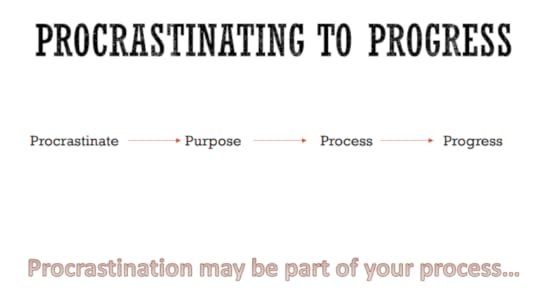
Ironically, I procrastinated about writing this article. Because, procrastination doesn’t necessarily mean lack of productivity, for me, it’s a step on the path to being creative and productive.
Acknowledge and embrace that procrastination may simply be part of your process (and that’s OK), but don’t let it get out of hand!
Procrastination TriggersWe all have our own triggers and signs that our progress is veering off course.
There are four triggers I recognise in myself when my procrastination is getting out of hand:
Trigger 1 – Email GrazingI’ll mindlessly check my emails and react to every ‘ping’ for a new message throughout the day. Constantly interrupting my flow and splitting my attention.
Solution – Close my email. Consciously choose to only check it once in the morning and once in the afternoon
Trigger 2 – Doom ScrollingMindlessly scrolling through Facebook or Instagram, just to keep my hands busy, distract myself and fill time.
Solution – Turn off notifications on all social platforms so they don’t interrupt or distract you.
When I check my emails twice a day, I also dip into Social Media to check messages etc.
Be OK with scrolling for entertainment, but consciously limit or plan in time for this instead of letting it bleed into the limits you set for your working day.
Trigger 3 – Multi taskingContrary to popular myths, humans can’t multitask and there are no gender exceptions here. We may be capable of doing more than one thing at a time, but if our attention is split we won’t do any of it properly, and shouldn’t try to!
Solution – Single Tasking. Focus on one thing at a time. I realise that’s not always easy when we all have such busy lives, but it is that simple!
Consciously stop yourself from flitting from one task to the next.
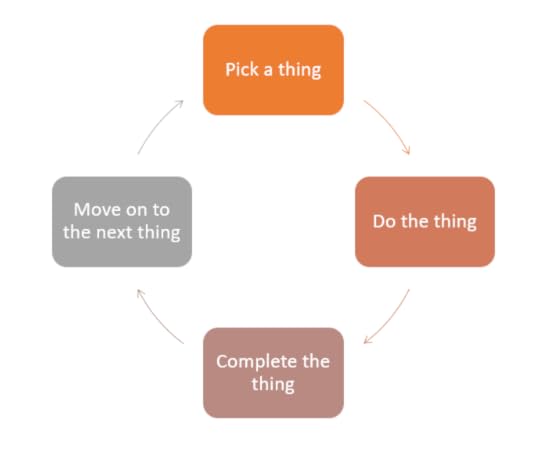 Trigger 4 – Self Punishment
Trigger 4 – Self Punishment Negative self talk is bad for our medical and physical health. That’s not ‘woo-woo’. That’s is well established, well researched, well proven FACT.
Paradoxically, our brains are wired to focus on the negative. Our ‘fight or flight’ instincts often overrule our logic. Although we may not be running from obvious predators, we are still hard wired to avoid threats. However, sometimes our biggest enemy can be ourselves.
That’s not to say we should always think positively and deny any negative feelings or experiences, but it is easy to trap ourselves into a spiral of self punishment.
Solution – This is a long, complex, deeply personal one. A lifetime’s work for many of us. There is no ‘magic pill’ or single solution, but there is one simple way to switch up how we treat ourselves.
Rather than criticising ourselves for ‘not’ doing things, we could reward ourselves when we ‘do’ something. However small the task we complete, or however small the reward is, humans are always more productive and motivated when they are positively reinforced than when they are negatively reinforced.
Two Top Tips to be a Productive ProcrastinatorConscious choice. Most of my triggers are about doing things mindlessly and thoughtlessly. Making conscious choices, being mindful instead of mindless. It’s OK to ‘waste’ time, it’s OK to procrastinate. It’s also OK to be a perfectionist but (number 2…)Set limits. Establish boundaries for yourself. Get help if you need it to be held accountable. Set a timer. Whatever works to get you to establish and stick to those limits. Everything in moderation (including procrastination and perfectionism!)Remember – It’s OK to ‘waste’ time. Humans are not built to be ‘on it’ constantly.
We need down time.
We need to rest, relax, restore, reflect and reset. Don’t ever let anyone make you feel guilty for needing that in your life (including yourself).
Sometimes, that involves watching silly cat videos on Instagram, or pointless crap on TV. It’s all OK. The trick is to set yourself limits and stick to them.
The post The Art of Productive Procrastination appeared first on Amy Morse.
November 9, 2023
3 How To Projects to Upcycle Old Jeans
I had a load of old jeans in my sewing stash, things that I’ve kept for years with the intention of using one day.
The potting shed at Hen’s Tooth has given me just that opportunity.
When I’m making things with fabric, I tend to take the ‘just do it’ approach.
I don’t to work to patterns, mostly because I’ve never learned to sew in that way – it has been trial and error – over the years I’ve got better at cutting and sewing in straight lines. Anything more complicated than that, not so much!
You Will NeedThese four projects only involve sewing straight lines and nothing too fancy.
Basic tools for all of these projects:Old jeans – stained, ripped it doesn’t matter (but you may want to clean them first if they’re a bit stinky!)

Selection of needles – ranging from sewing to darning

Cotton and embroidery thread
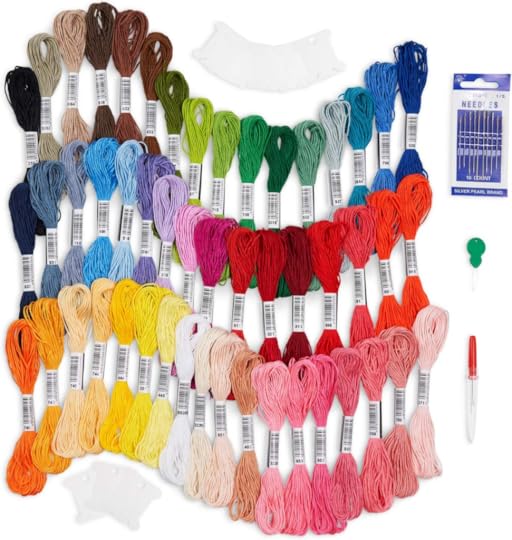
Good stout fabric scissors*
*(P.S: NEVER use fabric scissors to cut anything but fabric. Get a pair of fabric scissors and protect them from husbands, children and friends who fancy using them for anything other than fabric! Their long blades make them very tempting for cutting wrapping paper or wallpaper, but RESIST – that will be the death of them)

Sewing machine – if you have one. Much easier for some of these projects!
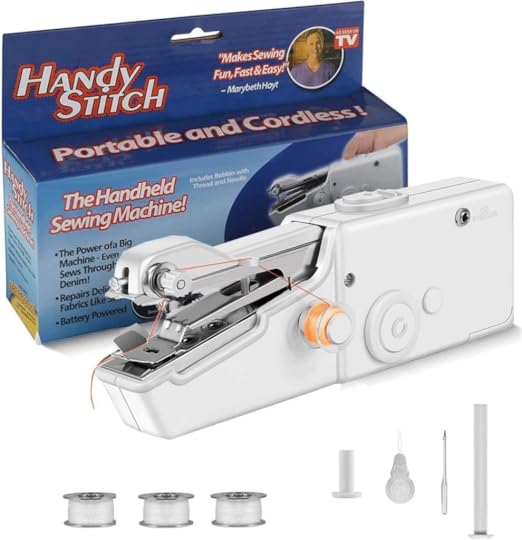 Upcycled Denim Rag Rug
Upcycled Denim Rag RugI have a vague memory of my mum making a rag rug, back in the 80s, out of our old baby clothes.
They are very simple, but they take LONG time to make. It’s a nice mindful activity, much like knitting, and perfect when you’re watching TV and need to do something with your hands.
You will needJeans – cut into lots of little stripsBig eyed blunt needle Sack cloth (I used an old log sack)Ribbon or bias binding
Sack cloth (I used an old log sack)Ribbon or bias binding
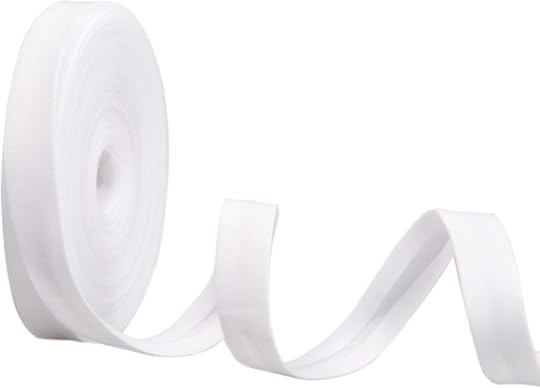
I’ve made a rag rug out of little scraps of denim.
To do this I had a sack from a bag of logs, opened the sack up into a flat sheet.
I then took the jeans and cut them into small strips, approximately two centimeters by five centimeters.

It doesn’t matter if they’re slightly different sizes and shapes it just adds to the character.
I’ve then used a wide-eyed needle and spent several evenings in front of the TV, threading the strips of jeans into the sack.
Count 2 -3 holes along and thread the fabric strip up and under 2 holes. Repeat until you cover the sack.

The rug is now in the shed at Hen’s Tooth and sits under my kitchen area. I have somewhere clean to stand, when I have bare feet, having kicked off my wellies outside to come in and make myself a cup of coffee on my Hobo Stove.
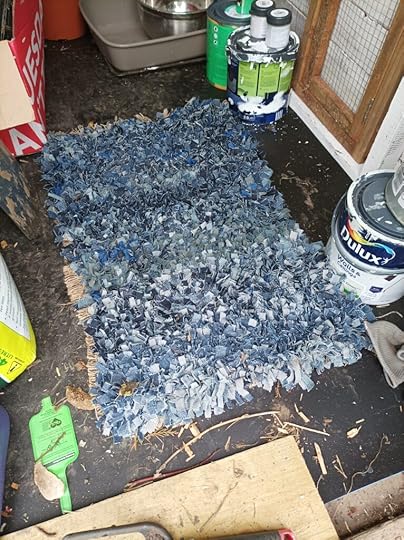
If I made another rug, I would sew a hem of bias binding around the perimeter of the rug first to hold the sack strands together.
Stylish Storage from a Jeans legIt’s really simple to make little bags out of the legs of jeans. They can be used for storage or gifts. I use them on the shelves in the shed to store tubs of screws and hooks for maintenance and DIY jobs around the plot.

For this quick craft task all you need is some embroidery thread, a needle, stout scissors and trouser legs.
This is a really simple hand sewing project, you just need some thick embroidery thread and follow this pattern:
 Credit to DIY Upcycled Denim Storage Basket | Hometalk
Credit to DIY Upcycled Denim Storage Basket | HometalkStitch along the bottom. Stitch across the corners. Fold it the right way round and you have a little pouch. These are really useful on the shelf in the shed to pop bits and bobs in, like coffee bags, sachets and tea bags I’ve pilfered from hotels I’ve strayed in and events I’ve attended.
Jeans Pocket Storage Hanger
Jeans pockets are a handy way to store small items. Arrange a few cut-off pockets, stitch them together and attach them to an old coat hanger for a smart wall hanging.
I use this to store my different gardening gloves. There were some thermal gardening gloves left in the shed by the previous tenants, I have some thick and sturdy gloves for more hazardous tasks, like cutting brambles. I picked up some pretty fabric ones on sale in Wilko (RIP Wilko) and a couple of heavy duty woolen gloves for the winter. Always important to have little selection of gloves for different jobs on the allotment, although when it comes to planting, I still prefer to get my fingers straight in the dirt!
Now my glove collection has its own home hanging in the shed.
 Jeans Cushion Cover
Jeans Cushion CoverBecause every girl needs a cushion to sit or kneel on.
I used the backs and fronts of jeans, complete with pockets and zips to make a cushion cover. The pockets give me something to pop things in when I’s sat down, like my phone.
Making cushion covers with a sewing machine is really easy.
Start with the cushion pad you want to cover.
Cut two pieces of fabric, big enough to overlap the cushion.
Turn the two pieces of fabric inside out and place on top of each other.
Sew three of the edges together with a sewing machine.
Then turn the pouch the right way around.
Put your cushion pad inside and hand sew the 4th edge to seal it.
Here is a useful blog with more comprehensive instructions: How to Make a Throw Pillow Cover With Recycled Jeans – FeltMagnet

 All 4 makes in one image. I love my little shed!
All 4 makes in one image. I love my little shed!*As an Amazon Associate I earn from qualifying purchases. This post may contain affiliate links.
The post 3 How To Projects to Upcycle Old Jeans appeared first on Amy Morse.
September 7, 2023
Why Sustainability Should Define Your Startup
When you startup something new, you have a golden opportunity to set the agenda, define your values and boldly assert your presence for the future.
“Be the change you want to see in the world,” is a quote attributed to Ghandi, but as a purpose-driven startup you get to do just that.

You’re making a positive impact on the planet and its people, while also growing your business.
What really makes your blood boil about how other businesses behave?It’s easy to feel powerless as individuals. Here we are – sipping our vegan drink from a soggy straw – while billionaire’s businesses exploit people with impunity, pollute the environment and send their executives around the world in private jets!
InjusticeTake those injustices, and that anger you feel about the damage big businesses are doing to people’s lives, and the very planet we depend on, then channel it into something positive.
The power of small businessSmall businesses generate more GDP, tax contributions, innovation and growth to the economy than any other sector. Collectively, as small businesses, we have the power to set the agenda for how businesses ought to behave.
Sustainable at heartWhen sustainability is at the heart of your core values and operations, it is not only responsible and ethical, but also strategically advantageous. It positions you for long-term success in a changing business landscape where sustainable practices are becoming increasingly essential.
But more than being in a unique position to show others how things should be done, there are many other reasons to be more sustainable in the way you do business.
Three Forms of SustainabilityThere are three ways to consider ‘sustainability’ – Sometimes referred to as the ‘Triple Bottom Line‘.
1. PeopleHumans are not lightbulbs. So many employers burn people out then discard them. Sooner or later they are going to struggle to attract and keep the right talent for their business. It’s hard to shake off a reputation for being a bad employer. That’s why certifications like, B-Corp exist. An appreciable and measurable way to show the world you look after the people your business depends on. And while employing people may never be a goal for your start up, or you set out just to employ yourself, treat yourself and those who engage with your business, how you would wish to be treated.
‘People’ also extends to the wider community. No business can operate in isolation. Your business doesn’t just serve its customers, it has a role to play in serving the wider business community, its local community and every other person who has contact with your business.
They all contribute to creating your reputation.2. PlanetWhen we talk about sustainability, this aspect is usually what people think of. How to be more environmentally responsible and ethical as a business. This is where lots of small things add up to make a difference, but also the big decisions on the ethical standards your business upholds.
3. ProsperityAs a business, you need to make money in order to survive. But when your focus is on ‘profit’ the motivation is greed.
Prosperity is the opposite of austerity.Prosperity is about sharing abundance and ensuring economic security for everyone who depends on your business. This ties in to how you treat the people that deal with your business.
When your business is prospering, it is paying suppliers fairly and promptly. Investing in innovation and technology that will save you money in the long term. Minimising waste.
Many investors are now considering environmental, social, and governance (ESG) factors when making investment decisions. Companies with strong sustainability practices are more likely to attract socially responsible investors and access capital more easily.
Not buying thingsThe most sustainable product is the one you don’t buy in the first place. Reusing, re-purposing and buying second hand – these all save money, resources and wastage.
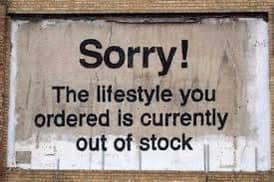 14 Reasons To Be Sustainable1) Long-Term Viability
14 Reasons To Be Sustainable1) Long-Term ViabilityBuilding a sustainable startup leads to long-term viability by ensuring access to resources, maintaining relationships with stakeholders, and fostering resilience in the face of environmental and social challenges. A focus on sustainable practices allows startups to adapt to changing market trends, regulations, and consumer preferences, reducing the risk of obsolescence.
2) Risk MitigationEnvironmental, social, and governance (ESG) risks can impact a startup’s reputation, operations, and bottom line. By integrating sustainable practices, startups can mitigate these risks and improve their resilience to external shocks.
3) Market DemandConsumers and investors are increasingly favouring sustainable products and companies. By aligning with this demand, startups can attract a larger customer base and secure funding from socially responsible investors.
4) Cost SavingsSustainable practices often lead to resource efficiency, waste reduction, and energy savings. Startups can benefit from lower operational costs, improved resource management, and increased profitability.
5) Regulatory ComplianceMany governments are implementing stricter environmental and social regulations. By proactively adopting sustainable practices, startups can ensure compliance with current and future regulations, avoiding legal issues and penalties.
6) Talent AttractionEmployees, especially from younger generations, are drawn to companies that align with their values. A commitment to sustainability can help startups attract and retain top talent, fostering a positive work environment.
7) Innovation OpportunitiesEmbracing sustainability can drive innovation within startups. The challenge of finding eco-friendly solutions often leads to creative problem-solving and the development of novel products or services.
8) Brand ReputationA sustainable startup can build a strong brand reputation based on ethical practices, environmental responsibility, and social contributions. Positive brand perception can lead to customer loyalty and word-of-mouth marketing.
9) Access to FundingMany investors are incorporating ESG criteria into their investment decisions. Startups that prioritise sustainability are more likely to attract funding from impact investors, venture capitalists, and other socially conscious sources.
10) Positive ImpactStartups have the opportunity to drive positive change in their industries and communities. By addressing environmental and social challenges, they can contribute to a more sustainable future.
11) ScalabilitySustainable practices are often scalable. As startups grow, they can continue to integrate these practices, ensuring that sustainability is embedded in their operations as they expand.
12) Competitive AdvantageSustainability can set startups apart from their competitors. It can provide a unique selling proposition that appeals to conscious consumers who want to support ethical and eco-friendly businesses. Sustainability often requires creative problem-solving and innovation. Eco-friendly products, services, or business models appeal to increasingly environmentally conscious consumers and will keep you a step ahead of regulatory changes.
13) Supply Chain ResilienceSustainable supply chain practices, such as diversifying suppliers, reducing the length of chains by buying locally, and reducing dependency on limited resources, can help you to navigate disruptions and maintain consistent operations. When big retailers have struggled to fill their shelves, smaller businesses have stepped in with shorter, agile and adaptable supply chains. For example, when the supermarkets ran out of eggs, there were always plentiful supplies in the local farm shop!
14) Enhanced TransparencyAdopting sustainability practices often requires transparency in reporting environmental and social metrics. This builds trust among stakeholders and encourages more open and inclusive communication.
In summary, integrating sustainability into startup practices not only contributes to a more sustainable world but also offers long-term success. Embracing sustainable practices from the start, improves your financial position, brand reputation, customer loyalty, and resilience into the future.
The cost of doing business should not be the Earth. By exploring what a regenerative future means for your business, you can provide solutions where people and the planet thrive.
Plus, it’s just the right thing to do.
Take action towards a better future for all.
*Written with ChatGPT AI assistanceThe post Why Sustainability Should Define Your Startup appeared first on Amy Morse.
August 14, 2023
Cold Email Mastery: Techniques to Grab Attention and Get Responses
A big thank you to Sarah Marksons for this really thorough and comprehensive guest post on email marketing.
Cold Email Mastery: Techniques to Grab Attention and Get Responses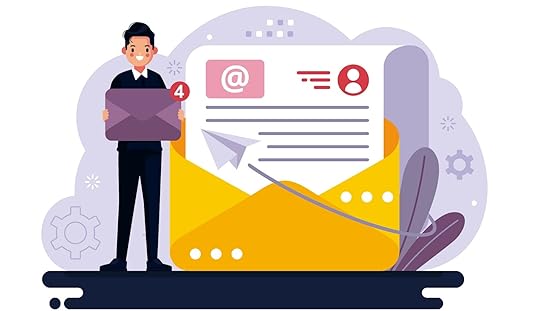 Introduction
IntroductionDo you struggle to receive responses to your cold emails? You’re not alone. Cold emailing can be challenging, but with the right techniques, you can master the art and achieve a high response rate.
Cold email mastery is a skill that can greatly enhance your chances of getting a response from potential customers. Crafting the perfect cold email requires careful planning and execution, as well as an understanding of your prospect’s psychology.
In this blog post, we will explore proven techniques to grab attention and get responses in your cold email campaigns such as email automation tools & email finder tools. From understanding your prospects to adding social proof, we’ll cover it all. So, get ready to elevate your cold emailing game and increase your response rate with these expert tips and real-life examples.
The Power of Cold EmailingReaching out to potential consumers or clients via cold email can be an effective strategy. Despite the fear of rejection or being seen as intrusive, a well-crafted cold email can yield surprisingly positive results.
Writing effective cold emails is of paramount importance to achieve success in today’s competitive business success landscape. A poorly written email will likely end up in the recipient’s spam folder or simply get ignored. Here are a few reasons why cold emailing can be a game-changer:
Targeted Outreach: Cold emailing allows you to pinpoint and reach out to specific individuals or companies who align with your products or services. By doing your research and identifying the right contacts, you can increase the chances of receiving a favorable response.Cost-effective: Compared to other marketing strategies, cold emailing is relatively low-cost. There are no advertising expenses or hefty investments required. With an email address and some persuasive writing, you can connect directly with potential leads without breaking the bank.Personalized Approach: Customizing your cold email to suit the recipient’s needs and interests can make a significant impact. By showing that you have taken the time to understand their business or personal goals, you are more likely to grab their attention and generate a positive response.Surprising Results: While cold-emailing may seem like a shot in the dark, many success stories attest to its effectiveness. Even with a low response rate, a few positive outcomes can lead to significant business opportunities. By being persistent and refining your approach, you can discover untapped potential in unexpected places.Relationship Building: Cold emailing is not just about closing a sale; it’s an opportunity to build relationships. Engaging in meaningful conversations, understanding pain points, and offering valuable solutions can lay the foundation for long-lasting partnerships and customer loyalty.Flexibility and Scalability: Cold emailing can be tailored to fit any industry, whether you are a solo entrepreneur or a large corporation. It offers the flexibility to adjust your approach based on audience preferences and market trends. Furthermore, as your business grows, cold emailing can be scaled to reach a wider audience, amplifying your chances of success.Remember, the key to successful cold emailing lies in crafting compelling and personalized messages. By respecting the recipient’s time, showcasing your value, and following up strategically, you can unlock the power of cold emailing and leverage it to grow your business or expand your network.
Personalization Techniques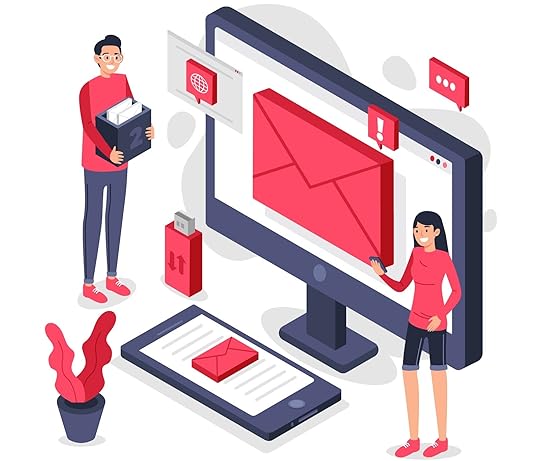 Using Research to Personalize Cold Emails
Using Research to Personalize Cold EmailsWhen it comes to cold email mastery, personalization is key to grabbing attention and getting responses. One effective technique is to use research to tailor your emails to each recipient. Take the time to learn about their industry, company, and role, and include specific details in your email. This shows that you’ve done your homework and adds a personalized touch that makes your email stand out.
Segmenting Your Target AudienceAnother important personalization technique is segmenting your target audience. Instead of sending one generic email to every contact on your list, segment your audience based on specific characteristics such as job title, industry, or previous interaction with your brand. This allows you to craft more targeted and relevant emails that are more likely to resonate with and engage your recipients.
By segmenting your audience, you can also customize your email messaging based on the specific pain points or needs of each group. This level of personalization demonstrates that you understand and empathize with their unique challenges, making it more likely that they will respond positively to your email.
Using these personalization techniques can significantly increase your chances of grabbing attention and getting responses to your cold emails. By showing that you have taken the time to understand and address the needs of your recipients, you can build rapport and establish yourself as a trusted and valuable contact. So, invest in research and segmentation, and watch your cold email success rate soar.
Writing Engaging Email CopiesCreating a Hook in the Opening LineWhen it comes to cold emailing, the opening line of your message is crucial. It is the first impression you make and can determine whether your recipient will continue reading or hit the delete button. To grab their attention and keep them engaged, you need to create a hook in the opening line.
One effective way to create a hook is by personalizing your opening line. Use the recipient’s name and mention something specific about their company or recent achievements. This shows that you have taken the time to research and tailor your message to them, making it more likely that they will continue reading.
How to Craft a Compelling Subject LineThe subject line is another important aspect of your cold email copy. It should be clear, concise, and compelling enough to make your recipient want to open your email. Avoid generic subject lines like “Introduction” or “Opportunity” and instead, incorporate a personalized touch.
Think about what would pique your interest if you were in their shoes. Consider using a question, an intriguing statement, or a specific benefit they can gain from your email. Keep it short and to the point, aiming to capture their curiosity and make them curious enough to click.
Crafting a Clear and Concise MessageWhen writing the body of your cold email, strive for clarity and conciseness. Long emails are rarely viewed by recipients. Clearly state the purpose of your email, whether it’s to set up a meeting, request information, or introduce a product or service. Highlight the value you can provide and make it easy for them to understand and respond.
Remember to personalize your message, show empathy, and be respectful of your time. Keep paragraphs short, use bullet points to break down information, and end your email with a clear call to action, guiding them to the next step. By crafting a clear and concise message, you increase the chances of getting a response from your cold email recipients.
Building Credibility and TrustWhen it comes to cold emails, building credibility and trust is essential to grab the attention of your recipients and increase the chances of getting responses. One effective technique is to personalize your email and make it clear that you have done your research. Address the recipient by their name and mention something specific about their company or industry to show that you are familiar with their business.
Another way to build credibility is by showcasing your expertise. Briefly highlight your relevant experience, certifications, or qualifications that make you an expert in your field. This will help establish you as a credible source of information and make your email more compelling.
Including Social Proof in Cold EmailsIncluding social proof in your cold emails can significantly boost your credibility and trustworthiness. Social proof refers to evidence that others have already benefited from your product, service, or expertise. This can be in the form of testimonials, case studies, or client success stories.
Including a short testimonial from a satisfied client or a notable company that you have worked with can make a significant impact on your recipients. It helps to showcase that others have had positive experiences with you and can encourage them to engage with your email.
Highlighting Relevant Achievements and ExperienceHighlighting relevant achievements and experience in your cold emails can capture the attention of your recipients and make your email stand out. Share any notable achievements, awards, or recognition that you have received in your field. This can help you establish yourself as an authority and make your email more compelling.
Additionally, mention any relevant experience or projects that demonstrate your expertise and make you the right person to solve their problems or meet their needs. By showcasing your past successes, you can build trust and increase the chances of getting a positive response to your cold email.
Call-to-Action Strategies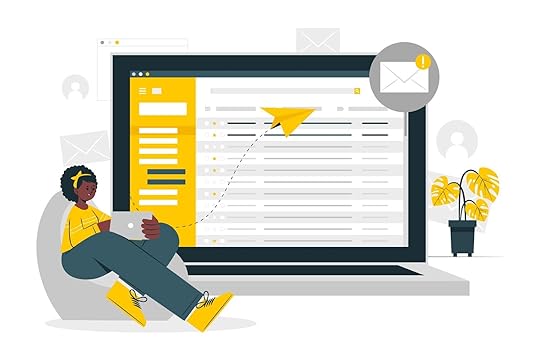 Encouraging Action with a Clear CTA
Encouraging Action with a Clear CTAWhen crafting a cold email, one of the most important aspects is the call-to-action (CTA). A clear CTA can make a significant difference in grabbing the recipient’s attention and increasing the chances of getting a response.
To encourage action, the CTA should be specific and straightforward. Using actionable words such as “download,” “register,” or “schedule” can prompt the recipient to take the desired action. By clearly stating what you want them to do, you eliminate any confusion or ambiguity.
Creating Urgency and Fear of Missing OutAnother effective strategy to increase response rates is to create a sense of urgency and fear of missing out. By highlighting limited-time offers, exclusive deals, or deadlines, you can compel the recipient to respond promptly. Phrases like “limited spots available” or “only available for the next 24 hours” can generate a sense of urgency and encourage quicker responses.
In addition, leveraging social proof or highlighting the potential benefits the recipient might miss by not taking action can also be persuasive. By emphasizing the value they can gain or the problem they can solve by responding, you make it harder for them to ignore your email.
By mastering these call-to-action strategies in your cold emails, you can significantly increase your chances of grabbing attention and receiving responses. Remember to keep your CTA clear, actionable, and compelling, and don’t forget to create a sense of urgency to prompt immediate action.
Following Up and Nurturing LeadsCrafting Follow-up Emails That Stand OutRegarding cold email outreach, following up is essential for increasing your chances of getting a response. However, the results might not be as expected if you just write a standard follow-up email. To stand out from the crowd and grab the recipient’s attention, it is important to craft follow-up emails that are personalized, relevant, and compelling.
Here are some tips to help you create follow-up emails that stand out:
Reference your previous email: Begin your follow-up email by referencing the previous email you sent. This helps to remind the recipient of your initial interaction and establishes a connection.Provide additional value: Offer the receiver more value in your follow-up email by including something of worth. This could be additional information, resources, or insights related to their needs or challenges.Add a sense of urgency: Create a sense of urgency by highlighting a deadline or limited-time offer. This may encourage the recipient to act as quickly as possible.Keep it concise: Make sure your follow-up email is concise and to the point. Use bullet points or numbered lists to convey information in a clear and easy-to-read format.Implementing Lead Nurturing TacticsLead nurturing is the process of building relationships and engaging with potential customers over time. It involves providing valuable information and personalized content to move leads through the sales funnel.
Here are some lead nurturing tactics to implement:
Segment your leads: Divide your leads into different segments based on their interests, demographics, or buying behavior. Provide relevant content: Deliver targeted content that addresses the pain points and challenges of your leads. This can include blog posts, case studies, webinars, or eBooks.Use marketing automation: Utilize marketing automation tools to send automated emails based on lead behavior and actions. This helps to keep leads engaged and nurtures them through the buyer’s journey.Personalize your communications: Address leads by their name and customize your emails based on their preferences and past interactions. This shows that you value their individual needs and builds trust.By following these techniques, you can maximize the effectiveness of your cold email outreach, increase response rates, and nurture leads toward becoming customers.
A/B Testing and OptimizationTesting Different Variables for ImprovementA/B testing is a crucial technique for achieving success in cold email campaigns. By testing different variables within your emails, you can gather data on what works best and optimize your approach accordingly.
Subject Lines: The subject line of your email is the first thing recipients see and can significantly impact open rates. A/B tests different subject lines to determine which ones grab attention and encourage recipients to open your email.
Email Content: Experiment with different email copy, call-to-action phrases, and personalization tactics. Test shorter versus longer emails, varying the structure of the email, and the placement of key information. Monitor the response and engagement rates to identify the most effective content.
Timing and Frequency: Determine the best times and days to send your emails by testing different sending schedules. You can also test the frequency of your emails to find the optimal balance between staying top of mind and avoiding overwhelming recipients.
Leveraging Data to Optimize Cold Email PerformanceTo optimize your cold email performance, you must analyze and leverage the data obtained from A/B testing. Use the metrics collected to identify trends, patterns, and areas for improvement.
Open and Response Rates: Monitor the open and response rates for each variation tested. Identify which emails generate the highest rates and adapt your approach accordingly.
Click-through and Conversion Rates: Evaluate the click-through rates and conversion rates from your cold emails. Determine which emails drive the most desired actions, such as website visits or product demos. Replicate successful strategies for future campaigns.
Customer Segmentation: Analyze the data to determine if specific segments or personas respond differently to certain variables. Use this information to customize your cold emails further and tailor the content to resonate with each audience.
By consistently A/B testing and optimizing your cold email strategies, you can grab attention, improve response rates, and maximize the effectiveness of your outreach efforts.
Using Email Finders & Automation ToolsUtilizing Email Finder toolsEmail-finding tools are essential for identifying the email addresses of potential prospects. These tools scrape the internet to gather data such as names, job titles, and company details. By inputting this information, you can quickly find the email address you need for your cold email campaign. Email finders are a great way to save time and ensure accuracy when reaching out to prospects.
Using Email Automation ToolsEmail automation tools can be a game changer when it comes to cold email outreach. These tools allow you to streamline your email campaigns, saving you valuable time and effort. With email automation, you can create personalized email templates, schedule follow-ups, and track email opens and clicks.
By automating the process, you can focus on nurturing leads and engaging with interested prospects rather than getting caught up in the repetitive task of sending individual emails.
By combining both email finders and automation tools, you can elevate your cold email strategy to new heights. These tools not only make the process more efficient but also increase your chances of grabbing attention and getting responses. With accurate email addresses and personalized automated messages, you can effectively target your ideal prospects and maximize your conversion rates.
Remember, however, that while these tools can be incredibly helpful, personalization and genuine human interaction should always be at the forefront of your cold email strategy. Use these tools as aids to enhance your efforts, but don’t forget to add your personal touch and deliver value to your prospects.
ConclusionIn conclusion, mastering the art of cold emailing is an essential skill for anyone aiming to grab attention and get responses. By harnessing the power of the Cold Email Mastery email finder techniques, you can significantly increase your chances of success.
Remember to personalize your emails, craft compelling subject lines, and provide value to your recipients. With these strategies implemented, you’ll be well on your way to becoming a cold emailing pro. Good luck and happy emailing!
AUTHOR BIO:
AUTHOR NAME: SARAH MARKSONS
AUTHOR PICTURE:

Short description
Sarah Marksons is a Marketing consultant primarily in B2B lead generation. She’s best known for her insightful blogs on email marketing, B2B and SaaS companies, and business growth. Sarah also has a good network in the sales industry, especially in the digital sales community. Apart from her work, she contributes to the community as an animal rights advocate. She loves creative writing, aspiring to make the world safer for everyone through marketing, writing, and everything she does.
The post Cold Email Mastery: Techniques to Grab Attention and Get Responses appeared first on Amy Morse.
July 28, 2023
A Word on Self Healing
It was a tough week.
Two new pieces of work, for two new clients, and neither went well.
As if, ‘perfect first time’ is the standard my brain thinks it needs to hold me to?
At the end of the week I went to bed, my brain telling me, “You’re a fraud. You’re a failure.”
Dark thoughts too difficult to share at the time.
The next day, sharing with my husband, “I feel like a right loser.”
He laughed.
A straight out belly laugh.
Like I had said the most hilarious thing he’d ever heard.
It wasn’t the reaction I expected.
Maybe some words of sympathy, reassurance? But no.
Clearly, after 28 years together, this is the person who knows me better than anyone.
Apparently, better than I know myself.
To him, my perceived ‘failure’ and subsequent labeling myself as a loser were ridiculous.
A zero tolerance approach to my self flagellation.
Why are we so downright mean to ourselves?
I’m not usually a doom scroller. But during some self-indulgent, time-filling scrolls I saw this…
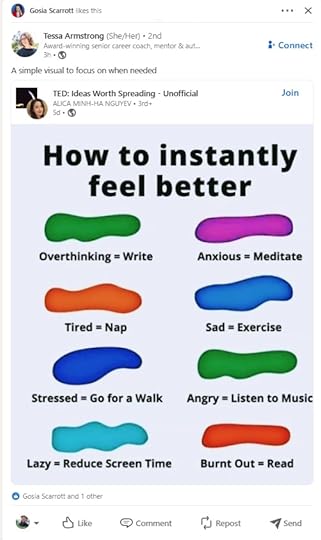 Self healing writing
Self healing writingI’m sharing it because I actually did need it in that moment.
I can be a bit cynical about these ‘motivational’ posts (ironic, I know), but seeing the right post at the right time can make a surprisingly big impact.
So do it.
Share it.
You never know what difference your words will make to someone who needs to read them in that moment.
Do it just to be kind and helpful, with no expectations.
Overthinking = writeWriting, journaling, unintentional writing… it’s surprisingly powerful as a self healing tool.
So here I am, writing it, and honestly, I feel better for it!
Have you stumble-scrolled over something that you needed to see right there and then?
The post A Word on Self Healing appeared first on Amy Morse.
July 19, 2023
Clean Up Greenwashing
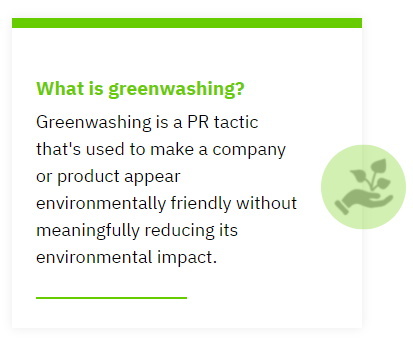
From ‘carbon neutral’ flights to ‘net zero’ bacon, dishonest green PR is on the rise.
Consumer demand for ethical, sustainable businesses is increasing, but some businesses would rather play pretend, or distract us to avoid taking responsibility for their own destructive practices.
Greenwashing refers to the practice of making misleading or unsubstantiated claims about the environmental benefits of a product, service, or company. It involves portraying a false or exaggerated image of environmental responsibility in order to appeal to environmentally conscious consumers.
Companies engaging in greenwashing often use deceptive marketing techniques to make their products or practices appear more environmentally friendly than they actually are. This can involve using vague or undefined terms like “eco-friendly” or “green” without providing any specific evidence or certifications to back up these claims. Greenwashing can also include highlighting a single environmentally friendly aspect of a product or company while ignoring other harmful or unsustainable aspects.
Greenwashing can take various forms, such as:Misleading labels and certifications: Using misleading labels, symbols, or certifications that give the impression of environmental responsibility without meeting the required standards.Irrelevant claims: Making environmental claims that are true but irrelevant to the product or company in question, distracting consumers from the actual environmental impact.Lack of transparency: Failing to provide detailed information about the environmental impact of a product or company, preventing consumers from making informed choices.Vague or unverifiable claims: Using general terms or claims without providing specific evidence or verifiable data to support them.Exaggerated claims: Making exaggerated or unrealistic claims about environmental benefits that cannot be substantiated or verified.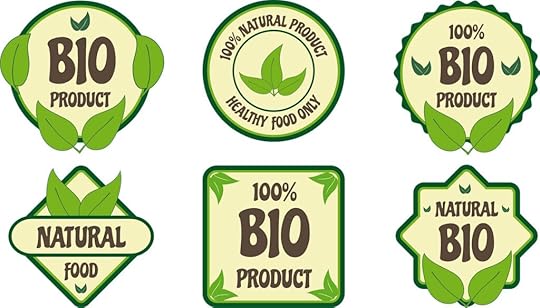
Businesses that greenwash lock in a harmful social and economic systems that take more from the Earth than we can sustain. It’s a cynical and harmful approach that seeks to deceive consumers so that climate criminals continue to get away with their destructive practices.
What to Look out forThis extract from a Greenpeace article sums up simply what we as consumers can look out for. Ultimately, we have the power to vote with our wallet and choose an alterative. Don’t fall for it!
A Cynical Deception
“If you’re trying to spot greenwashing, look out for these features or sins:
Token gestures. Promoting one ‘green’ feature, while ignoring other more important environmental issues. For example, a fast food company could promote a switch to recyclable paper straws, while still using meat suppliers responsible for burning down forests.
Not being specific. Using very broad or poor definitions on purpose to cause misunderstanding. For example, using a recycling symbol on packaging without telling you which part is or can be recycled.
No evidence to back up a claim. When a company wants you to take their word without sharing the proof behind their claim. So the claim can’t be checked or certified independently by someone else.
Using green buzzwords or images. Adverts or packaging with lots of natural scenes, or images like trees and leaves. Or buzzwords that are meaningless without explanation, like ‘non-toxic’, ‘all natural’, ‘eco conscious’ and ‘chemical-free’. This also includes putting a green label onto a product or company that’s environmentally harmful anyway.
Carbon offsetting. A way to try to make up for the pollution you cause, instead of trying to reduce it. Usually it’s done by paying others to reduce carbon emissions or take carbon out of the atmosphere. It’s greenwashing because it still means lots of carbon goes into the atmosphere.
Redundant claims. This is when the claim is not needed. For example, a company advertising a product as vegan or plant-based, when it would be anyway.”
Greenwashing is a cynical and harmful practice. It can create distrust in brands that genuinely are making a difference. It is fundamentally dishonest, seeking to deceive consumers. Businesses using it are duping us, so that they can continue to get away with their destructive practices. Misleading consumers into purchasing products or supporting companies they believe to be environmentally responsible. In reality, they may not be.
It undermines genuine efforts to promote sustainability and can hinder progress towards a more environmentally conscious society.
A Legal ResponsibilityIn the UK there is now a legally binding Green Claims Code. You can report greenwashers to Trading Standards, who can take legal action against them: The Green Claims Code checklist – GOV.UK (www.gov.uk)
The post Clean Up Greenwashing appeared first on Amy Morse.
July 11, 2023
Sustainability: A Holistic Approach
The cost of doing business should not be the Earth.
Sustainability is a word that gets thrown around casually, as if it’s something you can retrofit into your business – a ‘nice to have’.
What do we really mean when we talk about ‘sustainable business’?Sustainability is about meeting present needs without compromising future needs. ‘Sustaining’ the resources we have.
Social responsibility, economic viability and environmental responsibility.
How can we balance the competing forces of people, planet and ‘profit’?
Sustaining the business on an economic level
Sustaining people on a social and community level
Sustaining finite natural resources
It’s a concept referred to as the Triple Bottom Line. I’ve written about this previously:
Read it here:

But in summary, I argue that the pursuit of ‘profit’ is fundamentally disconnected from ‘people’ and ‘planet’.
Don’t get me wrong, I’m not against businesses making money – you have to in order to be financially sustainable.
But money and profit are not the same.
Profit is about acquisition and greed. Prosperity is about generating enough for everyone with a stake in the business. Reinvesting and creating self sustaining cycles.
Sustainability balances people, planet and prosperity
Achieving ‘sustainability’ is a journey rather than a destination. By its very nature it will change and evolve over time. It requires a holistic approach that addresses the interconnections between these different dimensions.
As businesses and individuals we can work on all aspects, holistically. As a small business, you have the power to vote for the kind of world you want to thrive in.
Economic SustainabilityFor a small business, this is about covering your costs, paying yourself and your team a living wage (at least) and having active capital in the business to invest and develop it.
On a wider scale, it’s about creating a healthy, robust and resilient economy that provides long-term prosperity for all (not just an extremely wealthy few). An enterprise ecosystem of ethical, responsible and equitable businesses. It involves promoting responsible consumption and production patterns, supporting fair trade practices, and minimising waste. Embracing circular economy principles, where resources are used efficiently.
 Social Sustainability
Social SustainabilityYou can’t be truly sustainable without social justice. In any business, the most important resource is the people within it. Without them, you have no business. And every business has an impact on the community around them. How those businesses behave effects every aspect of people’s lives.
A business can impose itself on a community or it can invest in it.
Social sustainability is about the well-being and quality of life for all individuals and communities. It involves promoting social justice, equality, and inclusion. Ensuring access to basic needs like healthcare, education, and clean water, as well as fostering safe and resilient communities.
For a small business, this can be as simple as supporting your neighbourhood. Being actively involved in improving the community for the benefit of all.
Making that community more attractive ultimately brings in more people, more business and increases the value of the area. Being a good neighbour makes sense on every level.
To have a greater impact, you could also consider setting your business up as a Social Enterprise. This is a different legal structure where the purpose of the business is to make a positive difference to a social challenge.
Environmental Sustainability
This is often what people mean when they talk about ‘sustainability’, forgetting the social and economic perspectives.
This aspect focuses on protecting and preserving the natural environment. It involves reducing pollution, conserving resources, reducing waste, promoting renewable energy sources, and respecting biodiversity. Adopting eco-friendly practices, choosing who you will and will not work with and considering the long term consequences of those choices.
Whether or not you ‘believe’ in Climate Change is irrelevant. We’d all prefer to live in a world that isn’t stinking with pollution and choking with waste! A world with green spaces and abundant wildlife.
Environmental Sustainability: ResourcesThere is more and more support out there for businesses wishing to step up their environmental impact. Much of the funded support is still aimed at larger businesses and is often associated with making their premises more energy efficient but here is some recommended reading and links to apply to your own practice:
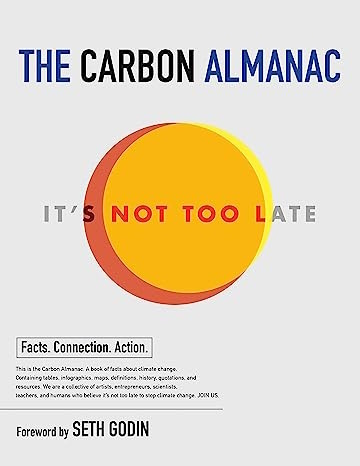 An accessable read with fascinating facts and graphics
An accessable read with fascinating facts and graphics
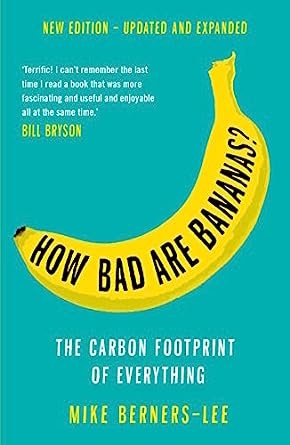 A guide to help you make more sustainable choices. The language is a bit ‘academic’ and it does focus on ‘carbon’ as a measure, which may not always be your priority, but on balance, it’s an eye opener and useful reference.
A guide to help you make more sustainable choices. The language is a bit ‘academic’ and it does focus on ‘carbon’ as a measure, which may not always be your priority, but on balance, it’s an eye opener and useful reference.Here in Bristol, Future Leap has some useful resources for businesses. Again, they tend to focus more on bigger businesses, but it’s worth getting their newsletter, considering their coworking space, and attending their events. Making new connections to help you improve your sustainable business practice: Coworking Space Bristol | Future Leap Hub
Also in the Bristol area, the West of England Combined Authority have funding and support to help you be more sustainable as a business. I recommended signing up tot he newsletter to find out about new innovations, support and funding: Financial and business support – Growth Hub (westofengland-ca.gov.uk)
The University of the West of England (UWE) also have a Skills For Clean Growth programme to help small businesses: Skills for Clean Growth for SMEs in West of England launches | UWE Bristol
For employers, B Corp is a certification for business as a force for good. Even if your business is not eligible to apply, their website has lots of useful information and links: The UK B Corporation Movement
Find their Climate Tools Base here, with links to plenty of further reading, courses, skills, etc.: B Climate Tools Base — B Corp Climate Collective
Personally, I have some reservations, as there are some businesses that are B Corp certified who create a lot of waste. I am suspicious that some businesses use B Corp to ‘Greenwash’ – I question Volvic as a B Corp (plastic water bottles?!).
 Small Actions, Big Difference
Small Actions, Big DifferenceWe all have a stake in creating a more sustainable way of life, therefore we all have a responsibility. And while it’s true that a small number of big businesses, individuals and governments could change the world if they chose to, all we can control is our own behaviour.
Sustainable Development Goals (SDGs): The United Nations’ Sustainable Development Goals provide a comprehensive framework for addressing sustainability challenges. The 17 SDGs cover a wide range of issues, including poverty eradication, gender equality, sustainable cities, responsible consumption, and climate action. Governments, organizations, and individuals worldwide strive to align their efforts with these goals.
Corporate Sustainability: Many businesses recognise the importance of integrating sustainability into their operations. Corporate sustainability involves adopting environmentally friendly practices, considering the social impact of business activities, and pursuing ethical and responsible business models. It includes initiatives such as reducing carbon emissions, embracing renewable energy, implementing fair labour practices, and supporting local communities.
Individual Actions: Sustainable living is also influenced by individual choices and behaviours. Adopting sustainable habits such as minimising waste, recycling, conserving energy and water, using public transportation, and supporting local and organic products can contribute to overall sustainability efforts. Educating oneself about sustainability and advocating for change in personal and professional spheres are also valuable contributions.
Collaboration and Partnerships: Addressing sustainability challenges requires collaboration among governments, businesses, civil society organisations, and individuals. By working together, sharing knowledge and resources, and fostering partnerships, stakeholders can combine efforts and achieve greater impact in areas like climate change mitigation, conservation, and poverty alleviation.
By considering the long-term consequences of our actions and embracing sustainable practices at individual, organisational, and societal levels, we can strive towards a more sustainable future for ourselves and generations to come.
*As an Amazon Associate I earn from qualifying purchases. This post may contain affiliate links.
The post Sustainability: A Holistic Approach appeared first on Amy Morse.
July 6, 2023
How To Leverage Social Media For Business Success
Social Media has become ubiquitous and is a crucial part of every businesses marketing strategy. These three tips from a contributor will help you stand out in the crowd.
Social Media For Business SuccessSocial media has become a crucial business tool and for good reasons. Not only does it boost brand awareness, but it also increases customer engagement and loyalty. Likewise, social media humanises your brand, making it easier for customers to align with your business. It’s also worth noting that frequently interacting with social media users can quickly make your company an authority figure in your niche, further boosting its credibility. It’s no wonder that approximately 48% of entrepreneurs regard social media as essential to maintaining their businesses. Despite these, you must know how to leverage various social media platforms to succeed. Here are some helpful strategies worth considering.
1) Consider social commerce
Social commerce allows businesses to directly sell their products and services to customers through various social media platforms. Indeed, this strategy has many benefits worth considering. For starters, building a larger audience while attracting your target market is easier. Since social commerce isn’t limited to buying and selling, brands can easily stay in touch with their customers, strengthening customer engagement. This, in turn, can win their loyalty. Seeing these advantages, you should leverage social commerce if you haven’t already.
As a tip, familiarise yourself with your audience profile to get the best engagement rates. Experts advise against using the same messages on your website; instead, leverage wordings that align with your social media followers. Humanising your social media replies is also recommended, so keep this in mind. Slow payment and checkout can lead to high cart abandonment rates. Therefore, ensure you streamline this process to prevent this.
2) Embrace influencer marketingInfluencer marketing is another great way to ensure business success with social media. Influencer marketing is when brands collaborate with social media influencers to market their products and services. Indeed, this strategy is especially beneficial if you are an upcoming business owner, as influencers can encourage their large follower base to patronise your brand. Moreover, if done right, influencer marketing can build your business credibility and boost customer loyalty.
However, it’s worth noting that influencer marketing is not about quick results. Like any marketing strategy, it requires a solid plan and budget, so keep this in mind. As a tip, work with an influencer popular on your preferred social media platform and connected to your niche. For instance, if you sell beauty products and your target market is Instagram, choosing a beauty guru on this platform is crucial. In addition to reaching your ideal customers, you can get more followers on Instagram.
3) Leverage video marketing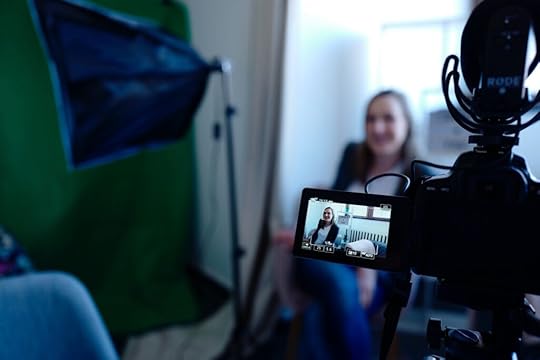
Video marketing is an effective strategy for telling your social media audience about your brand, products, and services in a more exciting manner. However, you must learn some helpful hacks to reap the full benefits of this strategy. Avoid making your video salesy, as it can repel potential clients. Instead, experts recommend telling a story about your brand to ignite strong emotions. For instance, a good narration of how your products and services helped a customer can work well. You should also note that the first ten seconds of your video will determine whether your audience will be hooked. Therefore, captivate their minds and win their hearts with a great intro.
The post How To Leverage Social Media For Business Success appeared first on Amy Morse.



